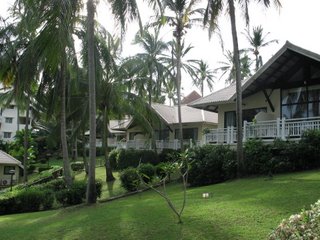-Soil Amelioration (Liming / Fertilizing).
Our soil has a relatively low pH (moderate acidity) which means, in theory, that a lot of elements in the soil essential for good plant growth can become less readily "available" eg. phosphorous while others eg. aluminium can tend towards toxic levels.
However, from looking at the vine leaves during the growing season, our vines do not exhibit any apparent nutrient deficiencies. Tests can be run to determine the actual nutrient status of the soil itself or of the vines by tissue tests eg. petiole analysis. But with our small non commercial operation this would be overkill.
 |
| Diagram: A.M.Alston |
So we just apply the rule of thumb principle when it comes to vine nutrition.
One way of deceasing soil acidity is to add lime (CaC03). This is not an immediate fix but a long term program. We have been 'liming' the vine areas for 15 years and have seen some small pH improvement.
Fertilizing is one way of replacing elements that the vine use up. We apply a totally organic general fertilizer which contains most of macro and micro nutrients required.
-Repairing Netting.
Our netting was primarily used to keep birds out and installed just before the fruit started to ripen.
But we have a kangaroo and wallaby 'problem' in the area (there are thousands) and they just love new vine shoots.
I initially tried a six layer electric fence system with only limited success so decided to install permanent netting to try to keep the pesky animals out.
This works fine during the growing season but in winter, when feed is short, the green grass in the cultivated inter rows must look very attractive and the 'roos tear the netting to get in. They have very sharp claws which do the damage. And some are tall as a man so they have the strength too.
So sewing skills are needed to repair the holes. I just use cut strips of netting scrap and 'darn' the holes closed.
Wind storms create holes mainly on the top of the netting around the supports so these are attended to as well. We did have rabbits gnawing holes in the bottom of the nets last year but a concerted baiting program (or maybe the calici virus is back) seems to have them under control.
-Equipment Maintenance.
Sprayers, electric and backpack, need to be cleaned out and 'decontaminated' of any unwanted residual sprays used during winter eg. herbicides.
The electric sprayer trailer was also in need of some remedial work eg. rust treatment and a new protective coating.
Wine processing equipment occasionally needs some work.
This year the crusher and press stand need a good sanding back, some rust treatment and a couple of coats of good epoxy paint.
Then of course we have to make sure our chemical spray stock eg. copper, sulphur etc. is sufficient for the season.
Most of these tasks must be done before bud burst. For the early varieties eg. Pinot Noir, this is usually sometime in September.
And this is already happening albeit a little later than expected due to the coldest winter in 15 years.























No comments:
Post a Comment